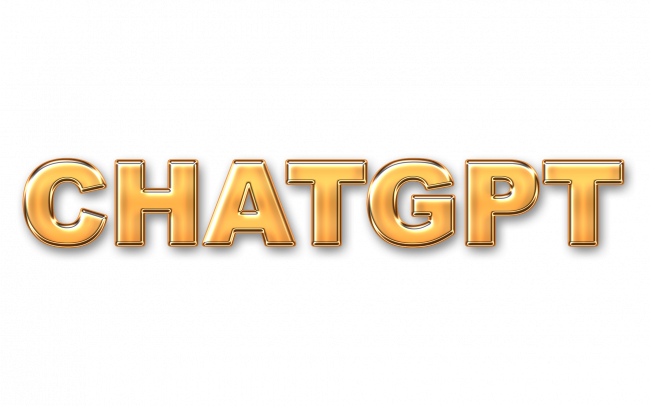Introduction
Welcome! If you're reading this, chances are you've experienced the frustration of receiving an error message when trying to generate a lengthy response with ChatGPT. ChatGPT is a remarkable language model, but it's not immune to network errors, especially when it comes to processing long and complex requests. In this article, we'll dive into the root causes of these errors and provide you with a range of strategies to help minimize and overcome them. From breaking down your prompts into smaller chunks to optimizing your internet connection, we'll cover everything you need to know to make the most out of ChatGPT, without the stress of encountering network errors. So, whether you're a student looking to generate creative writing ideas or a business professional needing AI-generated summaries of reports, we're here to help you achieve success with ChatGPT. Let's dive in!
Understanding ChatGPT Network Errors on Long Responses
Have you ever tried to generate a lengthy response using ChatGPT, only to be met with an error message? If so, you're not alone. There are a number of factors that can cause network errors on long responses, such as slow internet connections, high traffic on the servers, or even the complexity of the prompt itself. When these errors occur, they can have a significant impact on the quality of the response, causing it to be incomplete, irrelevant, or even nonsensical. Understanding the specific error messages that may appear is also crucial in diagnosing and addressing the issue. Some common error messages include "503 Service Unavailable", "Request Entity Too Large", or "Connection Reset by Peer". While these messages may seem cryptic, they can provide valuable clues as to what might be causing the error, and how to fix it. In the next section, we'll explore some strategies to help minimize these errors and improve the quality of your responses.

Strategies to Minimize ChatGPT Network Errors on Long Responses
Now that we've covered the causes and impact of ChatGPT network errors on long responses, let's explore some effective strategies to minimize these errors and maximize the quality of your generated responses. One approach is to break down lengthy prompts into smaller, more manageable chunks. This can help ChatGPT process the information more efficiently, reducing the likelihood of network errors. Another useful tip is to use more specific prompts and questions, which can help guide the model and improve the relevance and accuracy of the generated response. Adjusting the response length settings in the model can also help to prevent network errors, as it allows you to optimize the amount of data being processed. Additionally, optimizing your internet connectivity can also be a game-changer, as slow or unstable internet connections can often be the root cause of network errors. Whether it's switching to a faster connection, reducing the number of devices on your network, or simply relocating closer to your router, there are many ways to improve your internet connection and minimize network errors when working with ChatGPT. By applying these strategies, you'll be able to generate longer and more comprehensive responses with ease, while minimizing the risk of network errors.
Best Practices for Working with ChatGPT on Long Responses
While there are many strategies to help minimize network errors on long responses, there are also a number of best practices you can follow to optimize the quality and relevance of the responses generated by ChatGPT. One key practice is to prepare your prompts and inputs with care, as the quality of your input data will directly impact the quality of the response. Ensuring your input is clear, concise, and relevant to the task at hand can help ChatGPT provide better results. Another best practice is to adjust the length and complexity of your response based on the specific task. For example, when generating creative writing ideas, longer and more detailed responses may be desired, whereas for summarizing a report, shorter and more concise responses may be more appropriate. Understanding the strengths and limitations of the model for specific types of tasks can also be helpful, as it can inform how you prepare your inputs and what kind of response to expect. Finally, there are a number of tips you can follow to optimize the quality and relevance of responses generated by ChatGPT, such as training the model with specific data sets, tuning the model parameters, or simply experimenting with different prompts and inputs. By following these best practices, you'll be able to get the most out of ChatGPT and generate high-quality responses that meet your specific needs.
Overcoming ChatGPT Network Errors on Long Responses
Despite taking the necessary precautions and following best practices, you may still encounter network errors when working with ChatGPT on long responses. Don't worry - there are steps you can take to overcome these issues and get back on track. The first step is to take a deep breath and not panic. Network errors are a common issue when working with complex models like ChatGPT, and there are many solutions available. One troubleshooting tip is to check your internet connection and ensure that it is stable and fast enough to support the demands of the model. If that doesn't work, adjusting the response length or prompt complexity may help. In some cases, a simple refresh or clearing of your cache can also resolve the issue. If the issue persists, it's important to seek technical support from ChatGPT or your internet service provider. This can help to identify the root cause of the issue and provide more specific solutions. Remember, network errors are a natural part of working with complex models, and there are always solutions available. By following these steps and remaining calm, you can overcome any network errors and continue to generate high-quality responses with ChatGPT.
Advanced Techniques for Working with ChatGPT on Long Responses
If you've been using ChatGPT for a while and are looking to take your responses to the next level, there are some advanced techniques that you can use to improve the quality and relevance of your responses. One such technique is to use context to inform your prompts and responses. By providing the model with more context about the task at hand, you can help it to generate more accurate and relevant responses. Another advanced technique is to fine-tune the model for specific use cases. This involves training the model on a specific dataset related to the task at hand, which can significantly improve its performance. Finally, incorporating human feedback is another powerful technique that can help to improve the model's performance. By reviewing and correcting the model's responses, you can provide it with valuable insights and help it to learn and adapt over time. These advanced techniques require more time and effort than basic strategies, but they can significantly enhance the quality of your responses and help you to get the most out of ChatGPT.
Conclusion
In conclusion, ChatGPT is a powerful tool that can help you to generate high-quality responses to a wide range of prompts and questions. However, as with any technology, there are some common issues that you may encounter when using it, such as network errors on lengthy responses. In this article, we've discussed some of the causes of network errors, as well as strategies for minimizing and overcoming them. We've also covered best practices for working with ChatGPT on long responses, as well as advanced techniques that you can use to take your responses to the next level. By following these tips and techniques, you can get the most out of ChatGPT and generate responses that are accurate, relevant, and useful. Remember, it may take some trial and error to find the approach that works best for you, but with patience and persistence, you can unlock the full potential of this powerful tool.















